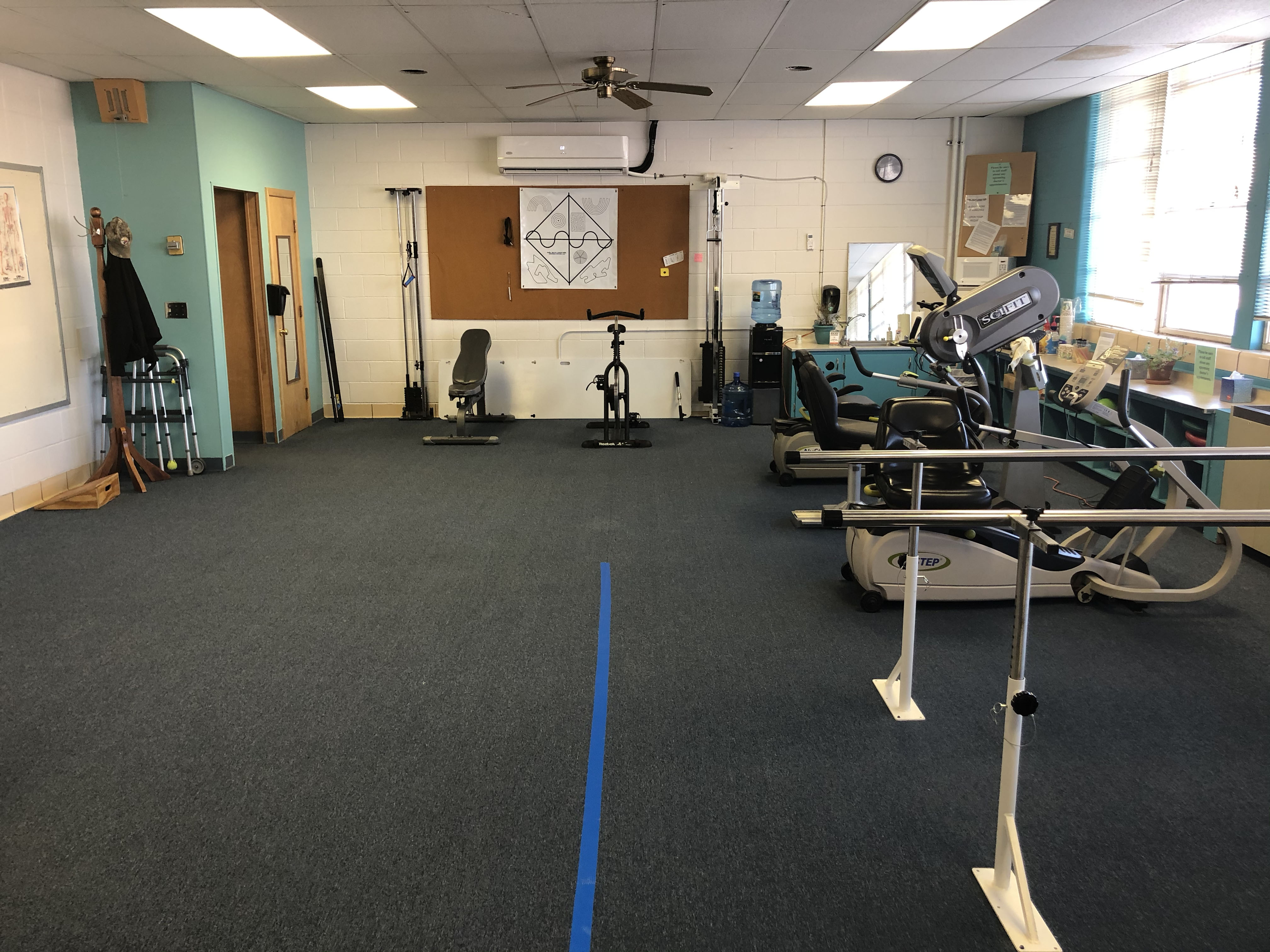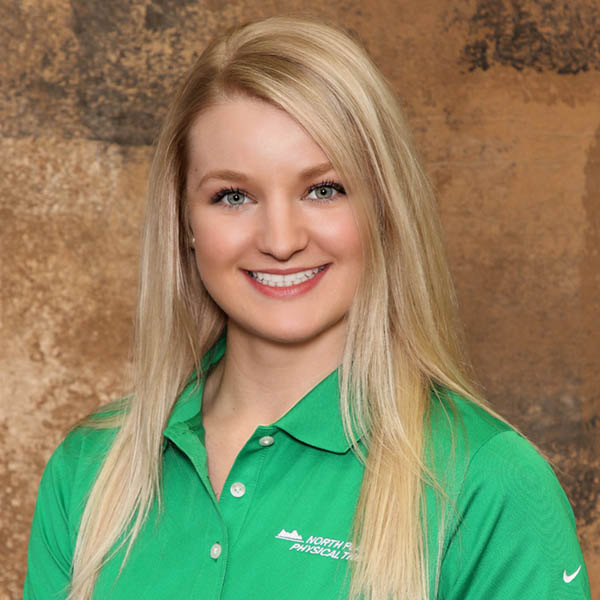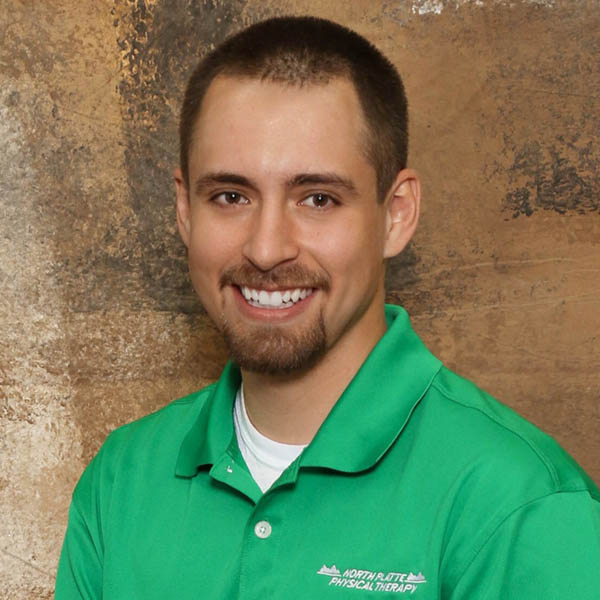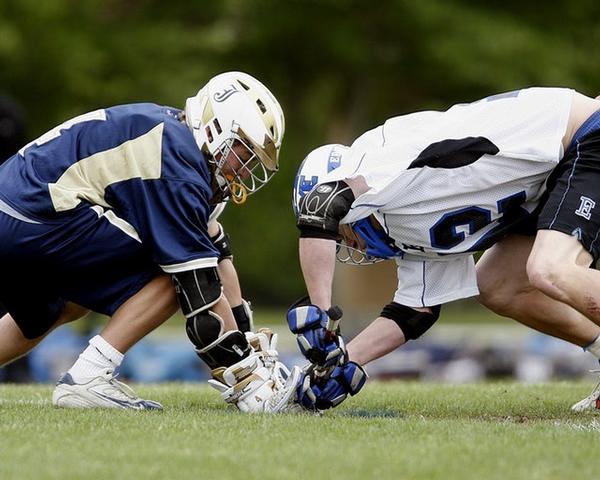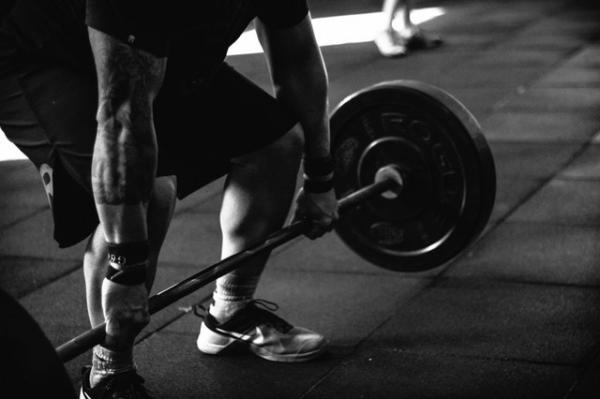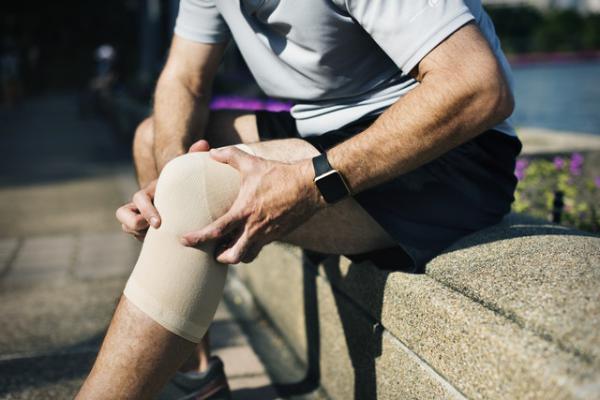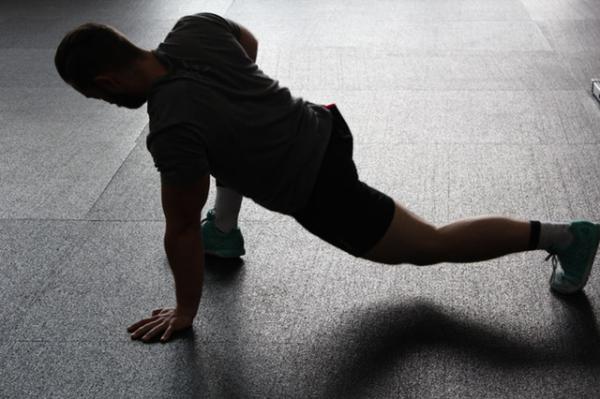Bear Lodge Rehabilitation - Moorcroft
Bear Lodge Rehabilitation in Moorcroft is a satellite clinic of the Sundance Office. We provide outpatient services to all age groups ranging from infants to geriatrics. We provide services to treat orthopedics, sports rehabilitation, vestibular and vertigo among others.
Location Details
Address: Town Center 101 S Belle Fourche, Moorcroft, WY 82721
Hours: Tuesday, Thursday and Fridays from 7:30-11:30; 12:15-3:15
Fax: 307-756-9636
Services Offered
- Arthritis Pain
- Back Pain
- Balance and Vestibular Rehab
- Biofeedback
- Body Mechanics Training
- Chronic Pain
- Cupping Therapy
- Custom Foot Orthotics
- Custom Splinting
- Ergonomic & Worksite Evaluations
- Functional Capacity Evaluations
- Graston Techniques
- Hand Therapy
- Headache
- Kinesio taping
- Modalities
- Myofacial Techniques
- Neck Pain
- Neurological Services
- Orthotic Fabrication
- Orthopedic Service
- Pediatric Therapy
- Post Cancer Treatment
- Pre/Post Surgical Rehab
- Pre-Employment Screening
- Return to Work Screening
- Return to Sport Exercise Programs
- Running Injuries
- SFMA - Selective Functional Movement Assessment
- Spine Care
- Sports Medicine
- Stroke Rehabilitation
- Tendonitis
- TMJ
- Torticollis
- Trigger Point Dry Needling
- Women's Health
- Work Hardening/Conditioning
- Work Injuries
- Worksaver Certified Work Physicals
- Wound Care
Latest News & Info
Casper Physical Therapy Explains High School Football Injuries
October 31, 2018
Each year, there are more than a half million injuries each year on American high school football fields. Given the severity and impact of these injuries, it is best to act as soon as possible—even if signs and symptoms seem non-existent. It is a mistake many students make that can affect them throughout their life. Learn about the top types of high school football injuries, handling concussions, and using Casper physical therapy to recover.Â
Â
Given that football is a contact sport, injuries may occur. Some of the most common injuries experienced by student athletes include:
Achilles tendonitis: Swelling can occur when the Achilles tendon (back of the ankle) is strained.Â
Fractures: Contact or quick movements can lead to fractures in the hands, legs, and more.Â
Knee: Occurring from rapid twisting movements or contact, ligaments in the knee can be stretched or torn.Â
Rotator cuff: The rotator cuff is a primary support within the shoulder. When strained, it can lead to radiating arm pain.Â
Strains: Strains occur when muscles in an area have been overly stretched. They can be painful when overly extended or if they tear.Â
Sprains: Sprains arise when ligaments, which connect muscles to bones, are negatively impacted. They can be overstretched or tear.Â
Concussions are brain injuries, commonly due to an impact to the head, as well as quick, rapid movements. These rapid movements cause the brain to move around, causing issues. This movement can cause bruising or problems with crucial blood vessels. Upon receiving a blow, a student-athlete should be checked out as soon as possible. Signs of a concussion include:Â
The go-to way a student-athlete needs to recover from a concussion is to rest. Many wonder, “is it safe to sleep if you have a concussion?†If symptoms are minimal, it may be fine. It is best to go by the advice of a doctor to be certain. In extreme cases, falling asleep with a concussion can lead to a loss of consciousness.Â
For injured student football players, it is imperative to see a local physical throughout the recovery process. A premier physical therapist will ensure your student takes proper measures for a swift and successful recovery. From there, physical therapists can help the student improve their sport. This can be done by teaching various stances and techniques to avoid injuries. Students that have not sustained an injury will still benefit from training with a physical therapist to avoid getting hurt in the future. For many students, an injury can be career ending, which is unfortunate before their actual athletic career really begins.Â
If your child has sustained an injury playing football, North Platte Physical Therapy’s sports medicine team will aid in their recovery. Specializing in student-athletes, we can help with recovery as well as athletic training. This will help your student avoid injuries in the future and become a stronger, quality athlete. Contact us today to schedule an appointment.Â
Â
Read More...
Â
Most Common Types of Injuries
Given that football is a contact sport, injuries may occur. Some of the most common injuries experienced by student athletes include:
Achilles tendonitis: Swelling can occur when the Achilles tendon (back of the ankle) is strained.Â
Fractures: Contact or quick movements can lead to fractures in the hands, legs, and more.Â
Knee: Occurring from rapid twisting movements or contact, ligaments in the knee can be stretched or torn.Â
Rotator cuff: The rotator cuff is a primary support within the shoulder. When strained, it can lead to radiating arm pain.Â
Strains: Strains occur when muscles in an area have been overly stretched. They can be painful when overly extended or if they tear.Â
Sprains: Sprains arise when ligaments, which connect muscles to bones, are negatively impacted. They can be overstretched or tear.Â
Handling Concussions
Concussions are brain injuries, commonly due to an impact to the head, as well as quick, rapid movements. These rapid movements cause the brain to move around, causing issues. This movement can cause bruising or problems with crucial blood vessels. Upon receiving a blow, a student-athlete should be checked out as soon as possible. Signs of a concussion include:Â
- Blurred vision
- Brain fog
- Dizziness
- Fatigue
- Headaches
- Loss of consciousness
- Nausea
- Slurred speech
- Tinnitus
- Vomiting
The go-to way a student-athlete needs to recover from a concussion is to rest. Many wonder, “is it safe to sleep if you have a concussion?†If symptoms are minimal, it may be fine. It is best to go by the advice of a doctor to be certain. In extreme cases, falling asleep with a concussion can lead to a loss of consciousness.Â
Recovery and Physical Therapy
For injured student football players, it is imperative to see a local physical throughout the recovery process. A premier physical therapist will ensure your student takes proper measures for a swift and successful recovery. From there, physical therapists can help the student improve their sport. This can be done by teaching various stances and techniques to avoid injuries. Students that have not sustained an injury will still benefit from training with a physical therapist to avoid getting hurt in the future. For many students, an injury can be career ending, which is unfortunate before their actual athletic career really begins.Â
If your child has sustained an injury playing football, North Platte Physical Therapy’s sports medicine team will aid in their recovery. Specializing in student-athletes, we can help with recovery as well as athletic training. This will help your student avoid injuries in the future and become a stronger, quality athlete. Contact us today to schedule an appointment.Â
Â
What Your Physical Therapist Has to Say About Keeping Knee Injuries From Occurring
October 17, 2018
If you’re an athlete—either someone who competes or just a weekend warrior—chances are pretty good that you have experienced some kind of knee issue. In fact, knee injuries are one of the most common reasons people seek out treatment such as physical therapy. Not only do knee injuries hurt, but they can prevent you from participating in the sports you love—and they can make life difficult in general. Before your healthy knees become unhealthy knees, read on to find out what a Cheyenne, WY physical therapist has to say about how you can protect your knees from injury.
At North Platte Physical Therapy, we want our patients to have healthy knees and live a pain-free life. If you have suffered an injury, we invite you to contact North Platte Physical Therapy to learn more about how we can help you recover. Our staff is well known throughout Wyoming because of our strong commitment to our patients. We can fulfill comprehensive physical therapy services, and we look forward to creating a custom a treatment plan based on your needs. Contact us today!
Â
Read More...
Maintain a Healthy Weight
Even just the stress of walking can harm your knees if you are carrying around extra pounds. Then if you had sports into the mix, you are really adding to the burden your knees must handle. Keep your weight at an appropriate level for your height to keep your knees from being unduly stressed.Find Low-Impact Activities
If you are carrying around a few extra pounds that you want to lose, or if your knees have a tendency to be tender, sticking to low-impact activities can really help the impact on your knees while still keeping you active. If you are looking for cardio options, there are plenty of machines at the gym, such as the elliptical, that can give your heart a good workout and keep your knees protected.Warm Up Before and Stretch After Each Work Out
Both of these are easy to skip when you are eager to get started competing or working out, but both are important to your routine. Warming up will loosen up muscles and tendons, making you less prone to injury. Stretching after your workout will help with mobility, and also help to protect you from injury.Wear Good Quality Shoes
If you are on your feet a lot—whether for sports or for everyday life—wear the right shoes for the job. If you stand a lot for your job, the proper footwear can protect your knees as well as your back. They can also keep you more comfortable all day. If you are into a sport such as running, go to a professional running store so they can recommend the proper shoe. This article has good information on appropriate shoes for both walking and running: 10 Best Walking and Running Shoes for Bad Knees and OA Knee Pain.Strength Train
Strength training—as long as you are using proper form—can strengthen the muscles and tendons in your legs, making less prone to injury. Have a coach or personal trainer give you training on proper form as this is essential to prevent injuries.ÂSeek Physical Therapy When Needed
Sometimes injuries and strains happen, and when they do, don’t hesitate to seek out the help of a physical therapist to help you get past the pain. You can find out more about seeing a physical therapist and learning what to expect by reading here.At North Platte Physical Therapy, we want our patients to have healthy knees and live a pain-free life. If you have suffered an injury, we invite you to contact North Platte Physical Therapy to learn more about how we can help you recover. Our staff is well known throughout Wyoming because of our strong commitment to our patients. We can fulfill comprehensive physical therapy services, and we look forward to creating a custom a treatment plan based on your needs. Contact us today!
Â
When to Use Ice Versus Heat for Injuries
October 10, 2018
When you are hurting from a muscle strain or an injury, you might be wondering if you should treat your pain with ice or heat. Treating chronic pain with either can be highly effective, but it’s crucial to know which situations call for which treatment—and which call for both. Take the advice of a physical therapist to ensure you are using them effectively.
Let’s take a look at when you should be using ice versus heat.
There is also heat from an ultrasound, which can be highly effective. Sitting in a sauna is another option.
Heat therapy can soothe muscles and damaged tissue because it increases blood flow and temperature in the area, which promotes healing. Be sure you are using warm heat rather than hot.
Be sure you do not use heat therapy for the following:
You can purchase ice packs at the drugstore, which you keep in the freezer to use when needed. They come in all different kinds of shapes and sizes.
There are also coolant sprays available. Ice baths are another option that athletes often use to reduce potential swelling after a particularly tough workout.
Don’t use cold therapy if you have sensory disorders or poor circulation.
Never apply a cold pack directly to the skin; wrap it first in a towel or cloth or it can damage the skin and tissues.
Cold therapy is most effective when it is used several times throughout the day for 10 to 15 minutes at a time, applied to the affected area.
If you need more information about treating pain or injuries with ice or heat, give us a call today. North Platte is your go-to local physical therapist in Douglas, WY to provide the services that will get you feeling better and stronger. Our expert staff is respected throughout the Wyoming and Nebraska areas for providing superior and customized physical therapy services. We can handle any of your physical therapy needs. Fill out our contact form to get started and to find a location near you.
Â
Read More...
Let’s take a look at when you should be using ice versus heat.
Use Heat for Muscle Pain or Stiffness
There are two different types of heat you can use for muscle pain or stiffness: dry heat and moist heat. If you have ever used a heating pad, then you know how easy it is to apply dry heat. Moist heat can come from a source such as a steaming towel or a hot bath.There is also heat from an ultrasound, which can be highly effective. Sitting in a sauna is another option.
Heat therapy can soothe muscles and damaged tissue because it increases blood flow and temperature in the area, which promotes healing. Be sure you are using warm heat rather than hot.
Be sure you do not use heat therapy for the following:
- There is a bruise or burn in the affected area.
- There is a pre-existing condition such as diabetes, dermatitis, multiple sclerosis, or vascular disease that can be negatively affected by the heat.
- If you are pregnant, use of a hot tub or sauna for heat therapy is not recommended.
Use Ice for Injuries, Pain, Inflammation, and Swelling
Cold therapy does the opposite of heat therapy in that it draws blood flow away from the affected area. This can help reduce swelling and inflammation. It also numbs the area, temporarily relieving pain.You can purchase ice packs at the drugstore, which you keep in the freezer to use when needed. They come in all different kinds of shapes and sizes.
There are also coolant sprays available. Ice baths are another option that athletes often use to reduce potential swelling after a particularly tough workout.
Don’t use cold therapy if you have sensory disorders or poor circulation.
Never apply a cold pack directly to the skin; wrap it first in a towel or cloth or it can damage the skin and tissues.
Cold therapy is most effective when it is used several times throughout the day for 10 to 15 minutes at a time, applied to the affected area.
If you need more information about treating pain or injuries with ice or heat, give us a call today. North Platte is your go-to local physical therapist in Douglas, WY to provide the services that will get you feeling better and stronger. Our expert staff is respected throughout the Wyoming and Nebraska areas for providing superior and customized physical therapy services. We can handle any of your physical therapy needs. Fill out our contact form to get started and to find a location near you.
Â
Casper Physical Therapy Tips to Combat Sedentary Lifestyles
October 3, 2018
If you have a desk job and a commute into work every day, you are like many people who spend too much time sitting all day. Some experts are calling this the “new smoking†because it is having such a detrimental impact on our overall health—similar to the negative effects of smoking cigarettes. A lot of people are even suffering from chronic pain because of this unhealthy way of life. There are things you can do, however, and here are some tips from a Casper physical therapy expert.
If you can incorporate the above tips into your life, you will be well on your way to staying in motion, which is crucial for your overall wellbeing.
Contact North Platte Physical Therapy to learn more about the effects a sedentary lifestyle can have on your body. Our staff is admired throughout the Wyoming and Nebraska areas because of our commitment to our clients. We can fulfill comprehensive physical therapy services, and we are happy to customize a treatment plan that can help you go to your job every day without serious health ramifications. Give us a call!
Â
Read More...
Take Frequent Walking Breaks
It’s easy to sit at your desk hour after hour without getting up, but frequent walking breaks is good for your health. Instead of instant messaging someone in your office, get up and walk to speak face-to-face. If you forget to get up, get one of the popular fitness trackers on the market and set up reminders to get up for a few minutes every hour or so. (These trackers can also help make sure you get a minimum number of steps in each day.)Take the Stairs
If you have the opportunity to choose the stairs or an elevator, always take the stairs. Stair-climbing burns a lot of calories—and it is good for your heart.Stand Up When You Can
When you are a phone call stand up and walk around, if possible. Or ask your company to invest in a standing desk for you. Most of them are affordable and adjustable so you can move back and forth between sitting and standing.Drink Plenty of Water
Staying hydrated is good for your body—and it will mean more frequent trips to the restroom, which will get you moving more. If you are wondering just how much water is enough, take a look at this article: How Much Water Should You Drink Each Day?Park Far Away
Don’t look for the closest parking spot; find one that will force you to walk a bit farther—whether you are at the office or the mall. This is a good way to incorporate more walking into your day.Hit the Gym or the Trail
If you aren’t already working out, make it a part of your normal routine. You don’t need to spend hours each day at the gym or run 10 miles at a time to benefit. Even just 20 minutes a day will go a long way toward improving your health.If you can incorporate the above tips into your life, you will be well on your way to staying in motion, which is crucial for your overall wellbeing.
Contact North Platte Physical Therapy to learn more about the effects a sedentary lifestyle can have on your body. Our staff is admired throughout the Wyoming and Nebraska areas because of our commitment to our clients. We can fulfill comprehensive physical therapy services, and we are happy to customize a treatment plan that can help you go to your job every day without serious health ramifications. Give us a call!
Â
Advice on Warming Up Versus Stretching Before Your Workout
September 26, 2018
For most people, when they hear the terms “stretching†and “warming up†they consider them to be the same thing. But the fact is that they are two different things that serve two different purposes for your body. When it comes to your workout, both are important and should be a part of your routine. Let’s take a look at how a Cheyenne, WY physical therapist defines the two and explains when it is appropriate for both in your training program.
Read what the experts at Fitness Magazine have to say about getting your body warmed up prior to a workout in this article: The 5-Minute Warm-Up You Need Before Any Workout.
Most experts recommend that you warm up the muscles you plan to focus on during your workout. For instance, if you are at the gym to do back squats, air squats should be part of your pre-workout warmup routine.
Stretching—It’s best to stretch when your body is already warmed up, so it often makes the most sense to stretch after your workout rather than before. Stretching will help increase flexibility, which can decrease your chance of feeling pain—after a workout or on a daily basis. Stretching one part of the body often impacts another part. For example, if you stretch the hamstring area regularly, this can lessen the chance that you’ll have a sore back from sitting at a computer all day.Â
Whether you are a serious athlete or a weekend warrior, injury prevention means that you can enjoy your activities rather than sit on the bench. Be sure to warm up and stretch every time you work out.
Find out more about the importance of stretching and warming up, as well as Sportsmetrics, which is a scientifically proven program designed to help prevent serious knee injuries, by contacting our office.
If you have suffered an injury and want to add physical therapy to your routine, North Platte is your go-to local physical therapist in Cheyenne, WY to provide the services that will get you feeling better and stronger. Our expert staff is respected throughout the Wyoming and Nebraska areas for providing superior and customized physical therapy services. We can handle any of your physical therapy needs. Fill out our contact form to get started and to find a location near you.
Â
Read More...
The Difference Between Stretching and Warming Up
Warming up is the act of increasing your core temperature and getting blood to flow to your muscles. Stretching is designed to help increase your flexibility as well as your range of motion. Warming up should be done before your workout whereas stretching should be done afterward—or when you body is already warm.Read what the experts at Fitness Magazine have to say about getting your body warmed up prior to a workout in this article: The 5-Minute Warm-Up You Need Before Any Workout.
The Benefits of Stretching and Warming Up
Warming up—When you warm up before working out, you increase your heart rate, which means your muscles get more blood and oxygen. It also raises your body temperature so that your muscles and tendons will work better during strenuous exercise. If you have any tightness in your muscles before working out, a warmup will help decrease that. It will also improve your range of motion.Most experts recommend that you warm up the muscles you plan to focus on during your workout. For instance, if you are at the gym to do back squats, air squats should be part of your pre-workout warmup routine.
Stretching—It’s best to stretch when your body is already warmed up, so it often makes the most sense to stretch after your workout rather than before. Stretching will help increase flexibility, which can decrease your chance of feeling pain—after a workout or on a daily basis. Stretching one part of the body often impacts another part. For example, if you stretch the hamstring area regularly, this can lessen the chance that you’ll have a sore back from sitting at a computer all day.Â
Whether you are a serious athlete or a weekend warrior, injury prevention means that you can enjoy your activities rather than sit on the bench. Be sure to warm up and stretch every time you work out.
Find out more about the importance of stretching and warming up, as well as Sportsmetrics, which is a scientifically proven program designed to help prevent serious knee injuries, by contacting our office.
If you have suffered an injury and want to add physical therapy to your routine, North Platte is your go-to local physical therapist in Cheyenne, WY to provide the services that will get you feeling better and stronger. Our expert staff is respected throughout the Wyoming and Nebraska areas for providing superior and customized physical therapy services. We can handle any of your physical therapy needs. Fill out our contact form to get started and to find a location near you.
Â
